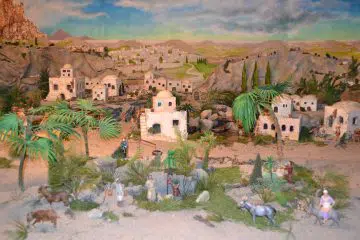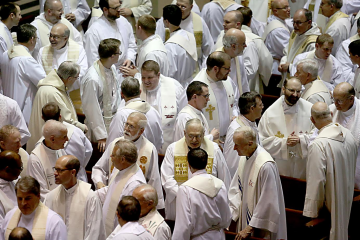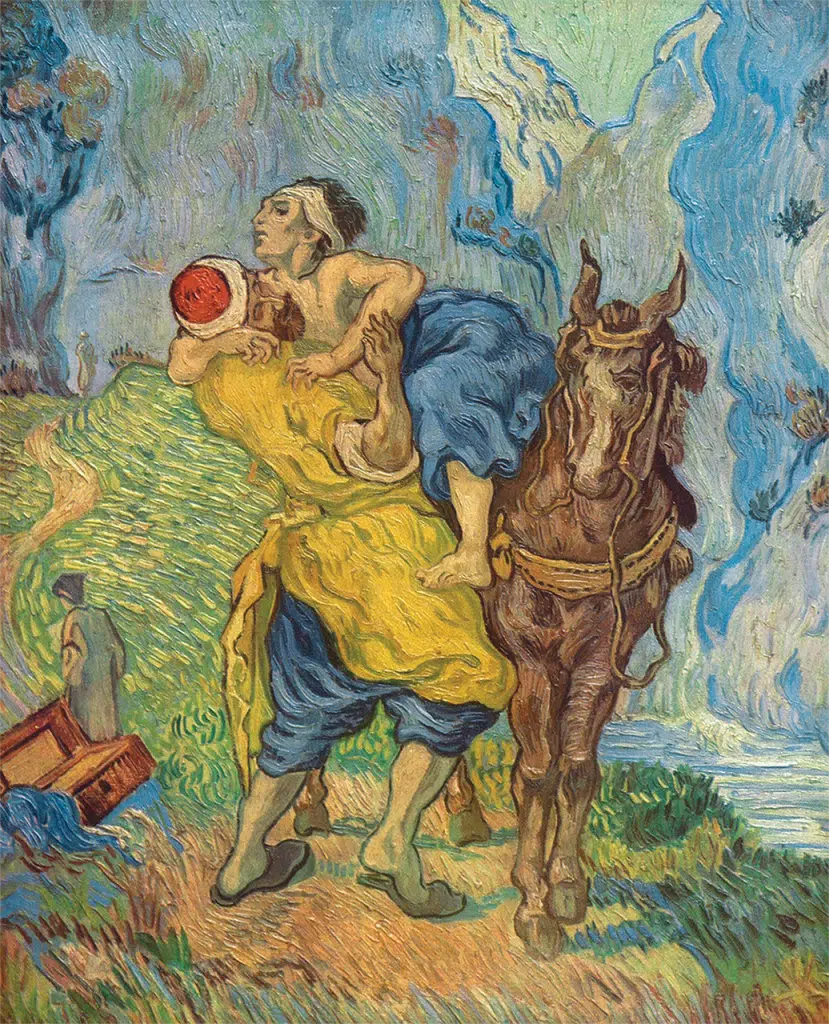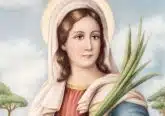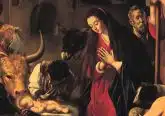Caring for Creation
 In a visually saturated world, it’s easy to feel overwhelmed and become desensitized to beauty. Visio Divina, Latin for “divine seeing,” encourages us to slow down and engage in visual contemplation, using art as a profound tool for connecting with the Divine.
In a visually saturated world, it’s easy to feel overwhelmed and become desensitized to beauty. Visio Divina, Latin for “divine seeing,” encourages us to slow down and engage in visual contemplation, using art as a profound tool for connecting with the Divine.
A Guide to Visio Divina
Begin by making the sign of the cross and inviting the Holy Spirit to guide your contemplation. Spend a moment meditating on the painting, Vincent van Gogh’s The Good Samaritan (After Delacroix), painted in 1890. Then, read Luke 10:25-37.
The Artist
Vincent van Gogh first aspired to be a minister began painting at age 28 but his career lasted only nine years, ending with his suicide in 1890. Defined by vibrant color, bold outline, textured brush strokes and emotional intensity, his work was often misunderstood and criticized, which left him feeling isolated and contributed to his severe mental health issues. Despite producing over 900 paintings, Van Gogh only gained recognition after death.
Although he didn’t practice formal religion in adulthood, Van Gogh found God, beauty and truth in nature. He often confided in his brother, Theo, who was a constant source of support. In an 1888 letter to Theo, Van Gogh wrote, “I feel that I am in the presence of something very beautiful when I am out in nature… God is the artist… and I am merely the interpreter.”
Enter In.
In this painting, Van Gogh’s layered, wavy brushstrokes draw immediate attention, as they do in all his paintings. This painterly technique creates a dreamy atmosphere, with energy and emotion in each line, making the scene vibrantly alive. It feels as if each stroke is jumping off the canvas, encircling and pulling the viewer into the painting.
Our eyes are drawn to the image’s center, with the Samaritan coming to the aid of the wounded man. The man’s body is slumped, indicating such injury and extreme pain that he’s unable to support himself and relies entirely on the Samaritan. Notice how the Samaritan puts all his weight into lifting the vulnerable man onto his horse, an act that appears both difficult and uncomfortable. This act holds profound significance, as the Samaritan is helping a Jew, crossing cultural boundaries of the time. Disregarding the animosity between these two groups, the Samaritan is “moved with compassion” to help the injured man.
An art historian from the Kröller-Müller Museum (which houses the painting) suggests that the wounded man, who wears a bandage over his ear, represents Vincent van Gogh; while Theo, with his red beard, is the Good Samaritan. Throughout his struggles with mental health, Van Gogh confided in Theo through more than 800 letters, which emphasizes his brother’s role as a supportive and compassionate figure in his life.
Now, study the two men walking away from the scene. Note the color of their garments and their postures. Their heads are downcast and their shoulders are tense, conveying their inner turmoil. The priest and the Levite face a moral dilemma: according to ancient Israel’s religious practices and the Hebrew Bible, touching a corpse renders them religiously impure. Should they help a man who may be dead or protect their ritual purity? The almost ghostly coloring of their figures could symbolize their lack of presence and compassion.
Lastly, do you see the empty suitcase thrown to the side? It belongs to the man who was beaten and robbed. Resembling a treasure chest, it might symbolize that true riches are not material, but spiritual. The act of helping your neighbor, as demonstrated by the Good Samaritan, represents the true “treasure,” suggesting that moral wealth outweighs material wealth.
Thematic Connection
This painting may not depict our first thought when hearing “care for creation,” but it reinforces that humanity is part of God’s Creation, thus caring for human beings is an integral part of our roles in Creation. In Pope Francis’ encyclical Laudato Si, which focuses on responsible stewardship of the environment, he writes, “A sense of deep communion with the rest of nature cannot be real if our hearts lack tenderness, compassion and concern for our fellow human beings” (chap. 2, para. 91). Ultimately, our commitment to one another is a reflection of our commitment to the world around us.
Emma Cassani is the graphic designer behind The Catholic Telegraph. She is passionate about exploring the intersection between art and faith. | [email protected]
This article appeared in the September 2024 edition of The Catholic Telegraph Magazine. For your complimentary subscription, click here.



![The night is advanced, the day is at hand. Let us then throw off the works of darkness [and] put on the armor of light Romans 13:12 Rorate Mass Old St Mary (CT Photo/Greg Hartman)](https://www.thecatholictelegraph.com/wp-content/uploads/2018/12/DSC_0569a-360x240.jpg)



